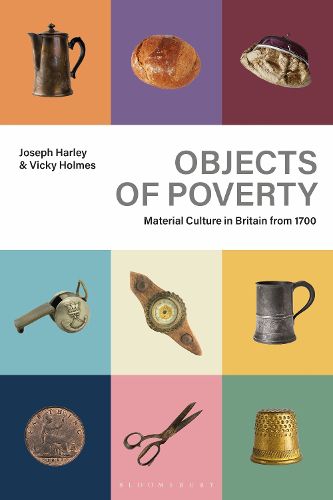Readings Newsletter
Become a Readings Member to make your shopping experience even easier.
Sign in or sign up for free!
You’re not far away from qualifying for FREE standard shipping within Australia
You’ve qualified for FREE standard shipping within Australia
The cart is loading…






Objects of Poverty is the first volume dedicated to analysing the material culture of poverty in British history from 1700 to the present. The book examines the history of poverty through the objects 'owned' by the poor and those crafted, repurposed or simply encountered by them, offering critical new insights into the experience of being impoverished. This collection brings together leading and emerging scholars who draw on a wide array of 'objects of poverty' from those that survive today, ranging from dolls to whistles to textile samples, to those that have long since gone and now only exist in visual and written sources. The contributors trace the importance of materiality in eighteenth-century and modern life, covering objects connected to sustenance, home, the makeshift, childhood, animals, money, workhouses, and injury and death. In its 23 chapters, along with some 77 illustrations, the book provides a detailed exploration of the history of poverty in Britain. Each of the chapters are based on original research and make a new contribution to the literature. This book will be fascinating reading for history enthusiasts to students to established academics across multiple disciplines.
$9.00 standard shipping within Australia
FREE standard shipping within Australia for orders over $100.00
Express & International shipping calculated at checkout
Objects of Poverty is the first volume dedicated to analysing the material culture of poverty in British history from 1700 to the present. The book examines the history of poverty through the objects 'owned' by the poor and those crafted, repurposed or simply encountered by them, offering critical new insights into the experience of being impoverished. This collection brings together leading and emerging scholars who draw on a wide array of 'objects of poverty' from those that survive today, ranging from dolls to whistles to textile samples, to those that have long since gone and now only exist in visual and written sources. The contributors trace the importance of materiality in eighteenth-century and modern life, covering objects connected to sustenance, home, the makeshift, childhood, animals, money, workhouses, and injury and death. In its 23 chapters, along with some 77 illustrations, the book provides a detailed exploration of the history of poverty in Britain. Each of the chapters are based on original research and make a new contribution to the literature. This book will be fascinating reading for history enthusiasts to students to established academics across multiple disciplines.